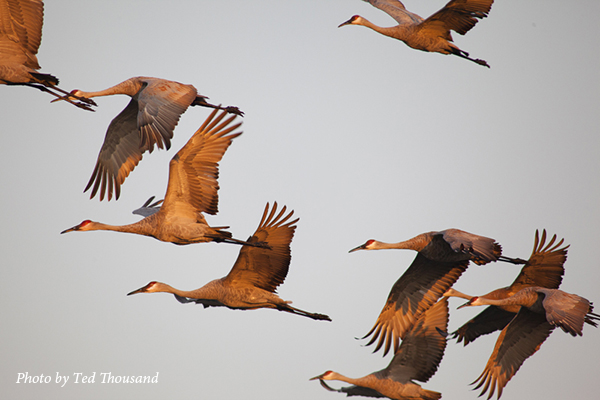
Update Spring 2022: The proposed Sandhill Crane hunt in Wisconsin did not move forward during the 2022 legislative session, but it may be discussed and voted on this fall. We remain focused on helping farmers solve crop depredation on their farms, knowing that a hunting season will never solve this problem.
We continue to encourage you to contact your legislators to share your personal views on why cranes on the landscape matter to you. Every voice is important!
Cranes evoke a strong emotional and spiritual connection for many people in Wisconsin and around the world. Cranes and the habitats they use are valued and supported by hunters, wildlife enthusiasts, farmers, and many other people in urban and rural areas across the state.
Once nearly lost from Wisconsin, Sandhill Cranes have undergone a dramatic population recovery over the past 70 years and are now a widespread breeding bird across our region. The recovery of the Sandhill Crane population is mostly attributed to their ability to adapt to agricultural landscapes in Wisconsin, coupled with hunting regulations and wetland protections that allowed this slow-reproducing species to thrive in the wild. Sandhill Cranes can be beneficial to farms at certain times of the year when they feed on agricultural pests and waste grain. However, cranes can also congregate in large numbers during the spring planting season, and in particular, locales cause damage to new shoots of corn and other crops.
In 2021, a bill (SB-620) was introduced to the Wisconsin State Assembly to create a hunting season for Sandhill Cranes in Wisconsin. Click here to view the bill. Approval of a Sandhill Crane hunt is sought by the Wisconsin Corn Growers Association and other farmers to reduce crop depredation on farms and trigger compensation payments to farmers.
The International Crane Foundation would like to work together on effective, non-lethal solutions to continue the successful recovery of Sandhill Cranes and support farmers in Wisconsin.
Any consideration of a potential crane hunt should be undertaken using the best available science and diverse opinions while sharing a vision for sustaining healthy crane populations on healthy landscapes. The International Crane Foundation has the following concerns about the proposed hunt:
Hunting is not a solution for crop damage caused by Sandhill Cranes. But solutions are available.
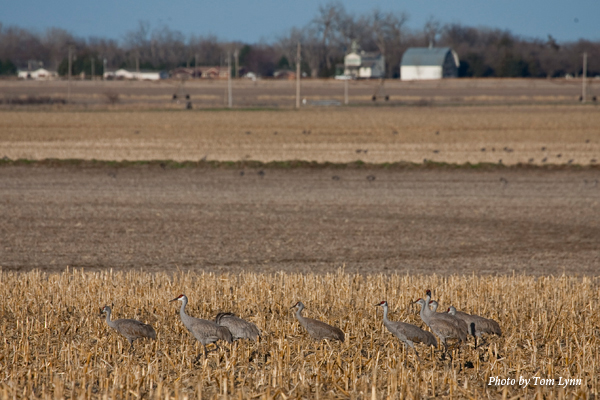
Crop damage by cranes is a real problem but there is no sustainable level of hunting of Sandhill Cranes that will solve this problem. Recreational waterfowl hunting is limited to late summer or fall, but crop damage from cranes occurs primarily in the spring when the cranes feed on the germinating corn seeds or other crops soon after planting.
The International Crane Foundation helped develop an effective chemical deterrent (Avipel) that offers a much more effective alternative for reducing crop damage than a limited crane hunt.
Farmers need support to address the added expense and inconvenience of applying Avipel. Alternative, more sustainable solutions for farmers include ensuring that all corn seed is treated at the point of manufacture with Avipel or other deterrents to cranes and other wildlife that may prey on germinating corn or seeds. Such availability would very substantially reduce the cost of deterrents per acre and the inconvenience of applying deterrents on the farm.
We also need improved policies that better support farmers by allowing payments for crop damage by wildlife species that do not have a hunting season. Currently, an approved hunting season is necessary for farmers to qualify for claims under the statewide Wildlife Damage Abatement and Claims Program.
We are committed to working with farmers, seed producers, legislators, and all others to solve crop damage through non-lethal methods.
Sandhill Cranes do not have the biological character of a game species. If not very carefully managed, Sandhill Crane hunting will harm populations.
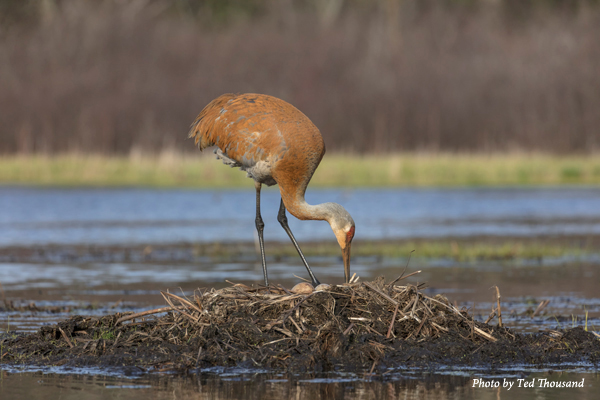
Over the last 70 years, Wisconsin’s Sandhill Crane population has recovered remarkably from very low numbers, but Sandhill Crane pairs reproduce very slowly. Most pairs do not successfully nest until 4-5 years of age, lay only two eggs, and typically only one hatchling survives to fledge once every three years. These characteristics contrast sharply with other game species that reproduce rapidly and recover quickly.
Around the world, hunting poses a threat to other crane species due to their slow rate of reproduction. Hunting was a key factor in the near loss of Sandhill Cranes from the Midwest and the near extinction of Whooping Cranes in North America.
Although the eastern population of Sandhill Cranes is already hunted in several states, the proposed legislation would lead to the first authorized hunt on their core breeding grounds. There is a significant risk that local breeding populations of Sandhill Cranes can be overharvested.
The accidental shooting of Whooping Cranes is a threat to their successful reintroduction into Wisconsin and the eastern United States.
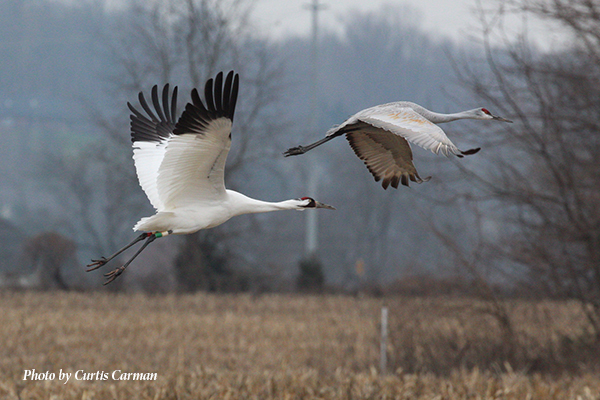
The International Crane Foundation and partners have worked for 20 years to reintroduce the endangered Whooping Crane to Wisconsin and its flyway in the eastern United States. This small and young population is highly vulnerable to any deaths of adult breeding birds.
Reintroduced Whooping Cranes are often found with groups of Sandhill Cranes. Young Whooping Cranes are mottled brown and can be easily misidentified as Sandhill Cranes, especially in the early morning and low light typical of hunting conditions.
Since the Whooping Crane Eastern Partnership established the Eastern Migratory Population of Whooping Cranes in 2001, at least one in 10 deaths have been caused by shooting. This has clearly delayed the success of the reintroduction, and a Sandhill Crane hunt would likely increase the risk further.
Cranes evoke a strong cultural and spiritual connection for many people in Wisconsin and around the world.
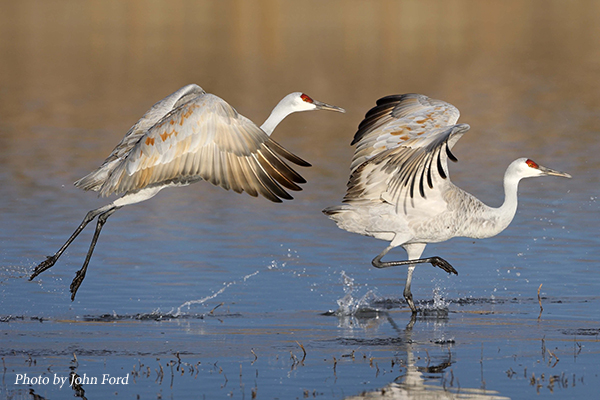
Most of the 9,500 members of the International Crane Foundation are strongly against the hunt due to the cultural and social values they place on this charismatic species. Our staff and members include avid waterfowl hunters and farmers who do not favor a Sandhill Crane hunt.
Millions of dollars are invested each year in crane-related tourism and associated businesses across the United States, and this is a growing industry in Wisconsin.
LEARN MORE
Federal and state conservation agencies have created a management plan for the Eastern Population of Greater Sandhill Cranes that identifies the framework for hunting in this population: Management Plan for the Eastern Population of Sandhill Cranes (2010)
